THE BOOK WORM




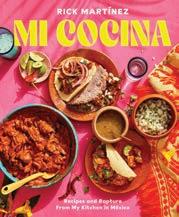






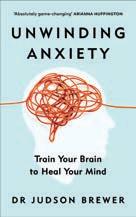

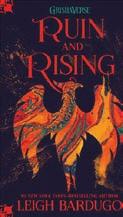



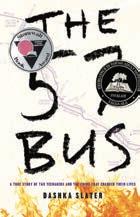














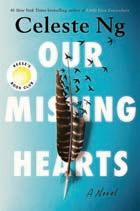

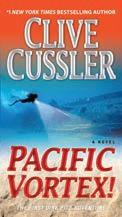
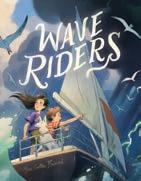









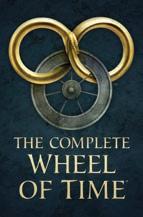
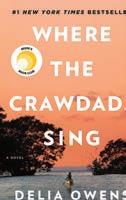

















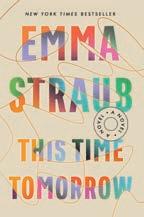





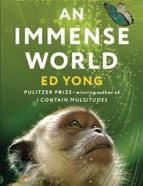


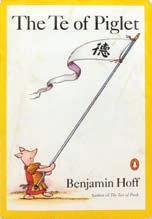
a reader ’ s guide by the faculty of falmouth academy 33rd edition | 2022-2023
Dear Friends,
I am delighted to present to you the 33rd edition of The Bookworm, Falmouth Academy’s annual reader’s guide presented by our faculty. As always, in these pages you will find book recommendations from across a variety of genres and subject matters, as well as some bestsellers and a few more eclectic reading choices.
The benefits of reading are myriad. It is exercise for the brain, stimulation for the mind, and food for the soul. It increases cognition, concentration, empathy, general knowledge, literacy, and can even reduce stress and support better sleep. Some would say that better readers make for better writers. A love of reading permeates all aspects of Falmouth Academy and extends beyond the classroom. We are a community of readers, who are dedicated to inspiring the next generation of bibliophiles.
A wonderful example of this is the practice employed by the Admission Office, which gives every visiting student a book at the end of the day. The student is invited to peruse a selection of books and choose what interests them. This welcoming custom perfectly captures FA’s commitment to fostering a love of reading and a belief that strong reading skills are a life skill that supports academic success.
Included in this edition is the current list of books selected to share with prospective students. The titles were reviewed and suggested by our student-led book group, which I facilitate. These books, and The Bookworm, serve as an open invitation to join our community of readers.
Sincerely yours,
 Britta Santamauro Director of Library and Media Services
Britta Santamauro Director of Library and Media Services
FALMOUTH ACADEMY
Founded in 1977 as an independent day school for students in grades 7 to 12 and situated on 34 acres in downtown Falmouth, Falmouth Academy is a community carefully designed so that teachers and students know each other and work together.
Inspired by the teaching excellence of its faculty, the impressive professional accomplishments of its alumni, and a long-standing reputation for academic achievement, Falmouth Academy strives to be the standard for educational excellence in southern New England. We prepare our students to become lifelong learners and engaged and responsible citizens, ready and eager to meet the challenges of the future. We connect our students to other ideas, places, and cultures by creating relevant learning opportunities in and out of the classroom to cultivate the curiosity, creativity, and capacity necessary to fully participate in a diverse society within an increasingly interconnected global world.
Learn why students travel from more than 22 towns across Cape Cod, the South Shore, the South Coast, and Martha’s Vineyard each day to attend Falmouth Academy at falmouthacademy.org. Interested in visiting? Learn more about Admission events at falmouthacademy.org/admissions or call 508-457-9696.
Falmouth Academy
7 Highfield Drive, Falmouth, MA 02540 508-457-9696
falmouthacademy.org
Administration
Matthew Green, Head of School
Michael Earley, Assistant Head of School
Petra Ehrenbrink, Academic Dean
Pamela Clapp Hinkle, Director of Development

Sarah Knowles, Director of Admission and Enrollment Management
Carmen DiSanto, Director of Finance and Operations
Editorial Staff
Amy Galvam, Director of Communications
Julianne Waite, Designer
Our Mission
Harnessing the power of inspired learning in a world-renowned scientific and vibrant artistic community, Falmouth Academy emboldens each student to take creative and intellectual risks to confidently engage the challenges of our times.
Guiding Values
We value...
• the beauty of knowledge and the joy of conversation
• collaboration and generosity of spirit
• the power of a culture of kindness
• relationships built on trust, respect, and direct communication
• the wonder of imagination
• each student’s pursuit of diverse challenges and opportunities
• teachers as models of confident, rich adulthood
• the richness of an educational experience that includes people with diverse backgrounds, perspectives, and identities
DEI Statement of Commitment
Falmouth Academy is committed to continued growth in the area of diversity, equity, and inclusion. We intentionally strive to be a community of dedicated learners who understand their roles and responsibilities as local and global citizens confronting the challenges of our times. We call all members of our community to actively engage in their own learning regarding biases and social injustices specific to ethnicity, gender identity and expression, racism, family composition, ablebodiedness, learning styles, religion, sexuality, age, and socio-economic status. In this pursuit, we continuously aim to create a safe and inclusive community where each member is seen, respected, and empowered to contribute.
From the Librarian
The Bookworm
Matt Barnes History
March
John Lewis
March is the late Congressman John Lewis’ award-winning autobiography. What separates March from other political autobiographies is that it is a graphic novel. For those of you unfamiliar with graphic novels, they are similar to a comic, but follow a larger narrative. Lewis alternates his story between the present, the inauguration of Barack Obama, and the past, his childhood and formative years. Likewise, the story alternates between vivid illustrations in color and black and white drawings. The trilogy is based on an old comic, Martin Luther King and the Montgomery Story, as a new and unique way to teach about the civil rights movement. At first, I was skeptical. I was never much of a comic book fan even as a child. But I was wrong.

The trilogy is harrowing as it details Lewis’ efforts to lead young people in the civil rights movement, oftentimes in the face of violent resistance. By age 25, Lewis had made a name for himself as a preacher, led protests in Alabama, collaborated with the President and Congress on civil rights legislation, and had given a fiery speech at the March on Washington for Jobs and Freedom.
March is both appealing and informative for children, young adults, and adults. The illustrations are fantastic and complement the story incredibly well. Autobiographies written by politicians are often dry and stale, filled with overused tropes to garner even an ounce of excitement in a given political cycle. March is not one of those books. If you are looking for a quick enjoyable read, and are willing to mix it up, I would highly suggest this book.
The Speech: The Story Behind Dr. Martin Luther King Jr.’s Dream Gary Younge
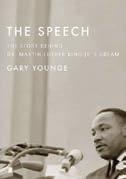
In preparation for teaching the civil rights movement, I went back to my bookshelf and read The Speech. This 180-page book is a great resource for understanding the immense effort that went into planning and executing King’s magnum opus, I Have a Dream. Younge, a British journalist, has a more unbiased approach in detailing the event as he is not engulfed by the mythology of it. His concise account of the March on Washington for Jobs and Freedom details the logistical concerns and minutiae considered to prevent the derailment of this monumental event.
For example, attendees were instructed not to stay out late in order to prevent a curfew from being enforced by local police. Younge describes the arduous process to rent a sound system— one powerful enough to allow thousands of people to hear the various speakers throughout the day. Maybe the most unique detail is that protesters were told not to use mayonnaise in their sandwiches, as they could spoil sooner.
Younge also addresses the relationship between King and Bayard Rustin, one of his trusted advisors and organizers. Rustin was a civil rights pioneer and an openly gay man who was often kept out of the public eye. It was thought his homosexuality was
a hindrance and put him at risk for being labeled a communist. As a result, Rustin’s legacy is not that well known. As we gear up for Falmouth Academy’s second social and environmental justice conference this March, I am reminded of how the small details are instrumental while planning events.
How the Word is Passed Clint Smith

I am a huge Clint Smith fanboy! Smith is a former English teacher, now poet and podcaster. He earned a Ph.D. in Education from Harvard and is a staff writer for The Atlantic. In 2018, he was named to the Forbes 30 under 30 list.
When he announced his debut book, How the Word is Passed, I immediately preordered it. Smith takes the reader on an immersive journey across the country and the world to describe historical sites and monuments as they relate to the legacy of slavery, such as Angola State Prison and the Whitney Plantation, both in Louisiana. What makes Smith a different writer is simply his prose. He has the uncanny ability to weave fascinating dialogue with sharp historical analysis and soothing poetry, which makes him a formidable writer. His conversations with Confederate reenactors is a view into the zeitgeist of the country. On a personal note, I had the pleasure to join the Monticello Teachers Institute in 2021, at which participants conducted research for the institution and developed educational resources. Smith’s first chapter details his experience at Monticello. His depiction of the Jefferson estate with its dedicated staff of educators, tour guides, and researchers transported me back to that summer experience. If you were inspired by Mr. Wells’ Bookworm review from last year (32nd edition), Begin Again, by Eddie Glaude, then you may consider adding this book to your library. If you enjoy audiobooks, Smith narrates his own book, which adds a sense of pride to the experience.
Christine Carter Modern Language

The Great Believers Rebecca Makkai
I was drawn to this book because it takes place in Chicago, a city I visited for the first time last year, and Paris, a city I know very well. The description also reminded me of The Immortalists, a book I enjoyed immensely and reviewed previously in The Bookworm. Makkai’s novel takes place from the late ’80s through early ’90s in Chicago, and in Paris in 2015, and follows two intertwined characters, Yale Tishman and Fiona Marcus. Fiona is the younger sister of Yale’s friend Nico, whose death from AIDS opens the novel. Yale, who works at a Chicago art gallery, is contacted by Fiona’s aunt regarding a personal collection possibly worth millions, and Yale’s professional life seemingly begins to flourish while his personal life crumbles as he loses friends and partners to the AIDS epidemic.
Thirty years later, Fiona, who is haunted by her brother’s death and that of nearly all his friends, travels to Paris hoping to
3The Bookworm 2022-23
reconcile with—or at least find—her daughter, who has all but disappeared after marrying and being recruited by a cult. While there, Fiona faces both national and personal tragedy, reliving the death of her brother and their mutual friends as the guest of Richard Campo, a legendary photographer, who is unveiling an exhibition of photography documenting the men lost to AIDS in Chicago in the ’80s and ’90s.
Fiona and Nico’s stories highlight the importance of friends and family as they navigate personal and global tragedies, and remind readers of the strength of compassion, forgiveness, and hope.
Suzanne Caruso History
We Measure the Earth with Our Bodies

Tsering Yangzom Lama
I often enter the Mashpee Public Library and walk right to the first display of books I see. Sometimes I score a great read, other times I don’t. This time I won big. We Measure the Earth with Our Bodies lifts up the story of Tibetan refugees who fled the country during China’s invasion in the late 1950s. Though it captures the story of many Tibetan refugees, the plot follows one family in particular as they hold fast to their cultural, religious, and familial connections. The storytelling is compelling and vivid. Tsering Yangzom Lama brings to light a historical period I did not know much about, and taught me some important lessons about history and how to hold onto one’s culture and connection to home, even from far away.
Eleanor Clark English

The Summer Book Tove Jansson
“You have to come to it by yourself,” says the grandmother of Jansson’s jewel of a novel, as she is commiserating with a visiting friend over the indignities of aging. And to some extent, that statement shapes the interactions of the main characters. “Grandmother,” six-year-old Sophia, and Sophia’s father–all three share a simple summer cabin on a remote island in the Gulf of Finland, as well as a respect for the rhythms and demands of the landscape and each other. Lacking a linear plot, the book is full of quiet patience. Jansson gives us glimpses of the rocky shoreline and visiting birds and lovingly-tended gardens with the eye of a naturalist. The descriptions alone would make turning the pages worth it, but gradually we notice glimpses of the reality behind the silence, and recognize that, with the mother absent, this is a story about much more. And while the understated details, such as the father’s quietly withdrawing to the attic to sit holding an old bathrobe or Sophia’s fear of deep water, make us catch our breath, happily the humor balances. (The often cantankerous grandmother spends a great deal of time sneaking cigarettes and talking bluntly to Sophia.) Some of us know Jansson as the author of the Moomin books, a delightful children’s series about magical, soft-looking, island-living creatures. Certainly my ten-year-old self, who read those books with devotion, would
have loved The Summer Book as well, but I think my adult self can love it more. “It lay right in the path of the wind and for many hundreds of years had tried to grow directly into the teeth of every storm,” Jansson writes about the island, “and had thus acquired an appearance all its own.” Slowly enjoying this little novel of aching kindness, we feel a little bit stronger, as if we, like Sophia, can maybe pitch a tent, preferably when a storm is brewing, run our hand over a bit of moss, and possibly be brave enough to sleep outdoors.

Mike Earley Assistant Head of School
This is Happinness Niall Williams

When a few of my family members urged me to read this, I assumed, based on the title, that it was a self-help book or possibly a memoir, which was puzzling because they know how I generally feel about those genres. In fact, this novel is one of those books that immerses you in a place, a time, and a circle of incredibly rich characters. In a tiny rural parish in Ireland as the first electric lines are being constructed, a teenage boy comes to live with his grandparents. They are named Ganga and Doady, which gives you some sense of the type of character you’ll meet in this book. You will be drawn into the quirks and traditions of life in a rural community facing changes that come with the arrival of modernity, you’ll find out how a few love stories turn out, and you’ll meet the mysterious stranger who comes to live with the family, and you’ll wonder why he’s there. Funny, touching, and insightful, this is one of those books that will make you wish it were longer when you get to the end.
The Committed Viet Thanh Nguyen
This novel is the sequel to The Sympathizer, the story of a South Vietnamese soldier who flees to America at the fall of Saigon, and turns out to be a communist spy whose task is to monitor the activities of the South Vietnamese exile community here. Both of these novels are versatile, as they explore politics, history, national identity, and the nature of deep, lasting friendship. Both books are also very funny, although the pervasive violence will likely sour some readers on the humor. In The Committed, the narrator has made his way to Paris in the 1980s, where his connections in the Vietnamese community take him in and find him work. Quickly, his job washing dishes in a restaurant turns into a variety of less legitimate—and much more dangerous—jobs in the Paris underworld. The book raises a number of questions. To what, if anything, is the narrator committed? Capitalism? Communism? Day-to-day survival? His “blood brother” from years ago, a polished assassin who hates communists, but doesn’t know that the narrator is (was?) a communist? What is the meaning of national identity, and how do prejudice and economic deprivation influence how we think about national identity? This book could easily be turned into an action movie, but it has much more depth to it than just the sex, drugs, and violence.
4 The Bookworm 2022-23
Gundhild Eder Modern Language
Agent Sonya Ben Macintyre
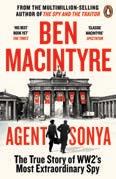
This book about “Moscow’s most daring wartime spy” is a fascinating true-life story about a female spy with the code name Sonya. It is well-written and engaging and reads almost like a spy novel. Sonya’s real name is Ursula Kuczynski, and she was born in 1907 into a wealthy and influential Jewish family in Berlin.
From an early age, she seemed to be drawn to the ideas of communism and, at 16 years old, she joined the Young Communist League. Although political marches were generally banned, she became a regular participant in demonstrations for workers’ rights in the Weimar Republic. The police brutality she experienced in the perilous streets of 1920s Berlin, as well as the danger arising from the growing Nazi movement, made her determined to stay true to the ideas of revolution and eager to do everything to help the working classes to overcome their struggle. During a stay in Shanghai with her husband in 1930, she observed the hard and unjust life of so many Chinese workers, particularly compared to the luxurious lifestyle the people in the western part of the city enjoyed. Her dismay about the poor living conditions of the workers reinforced her desire to do everything possible to support them, even if that meant putting herself in danger. This marks her official entry into espionage and the beginning of an exciting yet perilous life as a spy for the Soviet Military Intelligence during the most turbulent decades of the 20th century.
Petra Ehrenbrink Academic Dean, Modern Language Department Chair
The House on Vesper Sands

 Paraic O’Donnell
Paraic O’Donnell
If you like books by Charles Dickens or Wilkie Collins, you will enjoy this novel. It creates an atmosphere of Victorian England in which various characters are trying to find answers to a crime that leads into the world of Spiritists. With many period details deftly put in place, this novel would lend itself well to being made into a movie—think PBS’s recent remake of Around the World in 80 Days meets Vienna Blood
The Soul of an Octopus: A Surprising Exploration into the Wonder of Consciousness Sy Montgomery



What H is for Hawk did for falconry, this National Book Award finalist may do for octopuses (yes, the author tells us that this is the correct plural form). It explores two very different concepts of what a “mind” might be. I admit, if this hadn’t been a suggestion for Falmouth Reads Together, I probably would not have picked up this book. I’m so glad I did.
The Harbor Katrine Engberg
Craving some Nordic Noir? Look no further. If you are a fan of Scandinavian crime fiction, you will be entertained by this engrossing tale around the search for a missing Danish teenager.
Local Gone Missing Fiona Barton
Two teenagers overdosing at a music festival in a small seaside town sets off a chain reaction that uncovers a slew of well-hidden secrets. Told from various characters’ perspectives, this dark and twisty mystery kept my attention and was engaging to read.
What a pleasure it was to read this fairy tale with its struggling, flawed, and wonderful characters. The story follows Marra, a third-born princess, who learns that royal daughters are not much more than pawns when a kingdom’s alliances come into play. Seeking to rescue her sister from marriage to an abusive prince, Marra—and a motley crew of fellow questors— sets out on a rescue mission in which doing the impossible is only the beginning. Beware: this book may make you forget time. Once the crew arrived at the goblin market, I could no longer put the book down and had to read on to know the end of this delightful story.
Kyle Flannery
Assistant

Director of Admission 100 Poems Seamus Heaney
Ireland is a country vastly known for its rich literary history. The island has produced several household names for enjoyers of numerous genres of literature, including Oscar Wilde, James Joyce, William Butler Yeats, and Bram Stoker. Amongst these literary titans, however, Seamus Heaney may get overlooked. Winner of the 1995 Nobel Prize in Literature, much of Heaney’s poetry encapsulates both the enthralling landscape and historic political unrest of the Emerald Isle. I had the privilege of visiting the Seamus Heaney exhibit at the National Library of Ireland this summer, which increased my appreciation for the poet even further. This collection features work spanning his entire writing life, chosen by the Heaney family after his death in 2013. Some personal favorites include “At the Wellhead,” “District and Circle,” “St. Kevin and the Blackbird,” “Mid-Term Break,” “Höfn,” and “Blackberry-Picking.”
5The Bookworm 2022-23
Nettle & Bone T. Kingfisher
We Should All Be Feminists
Chimamanda Ngozi Adichie

During my first weeks at FA, I was thrilled to learn that Adichie’s Purple Hibiscus was on the reading list for our 10th-grade English. I was introduced to her writing during my senior year of high school, and she is one author that I have regularly kept up with in the past five years. Adichie’s work also served as a breath of fresh air while trudging through my 17thcentury literature course. (Sorry, John Milton.) In We Should All Be Feminists, Adichie describes several accounts of sexism and antifeminism that she experienced, both growing up in Nigeria and during her time in America. The book-length essay is a quick read and eloquently communicates the need for universal feminism in order to achieve a society that is prosperous and inclusive of all.
Bettina Freelund Modern Language

Where the Crawdads Sing
Delia Owens
I picked up a German-language version of this book while I was at the airport in Frankfurt this summer. Reading this fascinating love story/murder mystery about “marsh girl” Kya Clark made my cross-Atlantic flight the shortest one to date. Abandoned by her entire family as a small child and living alone in a desolate cottage on a bayou far outside of town, Kya grows up to trust the marshlands of coastal North Carolina as a sole source of comfort and nurture. Her romantic involvement with Chase Andrews, later exposed as a womanizer, ends in tragedy when he is found murdered in the marsh one fateful day in October 1969. The ensuing murder trial with Kya as the only suspect is deeply riveting, ending in Kya’s acquittal due to lack of evidence. I will not give away the final bombshell twist involving a shell necklace. This mesmerizing story kept me on the edge of my airplane seat up to the very last page.
Amy Galvam Director of Communications
The Ministry for the Future Kim Stanley Robinson

The Ministry for the Future is a great read but I find that I want to justify it as such because, for some, it reads like a think piece rather than a novel. It is not my typical genre, as I’ve been shellshocked away from much of climate fiction due to apocalyptic depictions of humanity’s devolution and ultimate demise over competition for scarce resources. This is not that.
Robinson’s book is hard science-based fiction set in the near future and portrays the urgency of the climate crisis in a way that left this reader with a realistic sense of it, but also with the hope that it may not be too late for us to do something about it. Although it opens with a horrific scene of a brutal heat wave in India that leaves 20 million people dead—which I assume
is meant to be a jarring all-too-possible wake-up call for the fictitious world, as well as the modern-day reader—it proceeds to explore various technological, political, and economic innovations to solve the crisis. Robinson proposes geoengineering solutions to slow sea-level rise, a new carbon coin to incentivize carbon reduction and sequestration, and the creation of a subsidiary of the United Nations responsible for advocating for future generations and defending all living creatures who can’t speak for themselves.
I can’t help but think that the last one is a direct invitation to all of us to assume that role and responsibility in order to pull us back from the tipping point before it is too late.
Braiding Sweetgrass: Indigenous Wisdom, Scientific Knowledge, and the Teachings of Plants

Robin Wall Kimmerer
This book is a hymn to the natural world and a balm for healing a commoditized and fractured relationship with the gifts and “persons” of the Earth—plant, animal, and human. It is grounded in respect, love, and gratitude. Kimmerer, as the subtitle of the book suggests, weaves together various ways of knowing through a collection of essays that celebrate restorative reciprocal relationship with the living world from her experience as a mother, an environmental biologist, and a member of the Citizen Potawatomi Nation. She explains that people can’t understand the world as a gift unless someone shows them how, and she does so through a combination of memoir, science writing, and Indigenous folklore.
Kimmerer champions the tenets of the honorable harvest—to never take the first, never take the last, take only what you need, and leave some for others—as medicine to heal a people ailing from a capitalistic system predicated on more-is-always-better consumerism. Her quiet revolutionary call to action is to “respect one another, support one another, bring your gift to the world and receive the gifts of others, and there will be enough for all.”
 Matt Green Head of School Great Circle Maggie Shipstead
Matt Green Head of School Great Circle Maggie Shipstead
When one considers that Maggie Shipstead’s Great Circle takes place over the course of some 100 years and covers a distance of some 25,000 miles, to say that this epic piece of historical fiction occupies a lot of time and space is certainly an understatement.
I was born to be a wanderer….I knew the horizon could never be caught but still chased it. What I have done is foolish; I had no choice but to do it.
Great Circle most definitely belongs to this diary excerpt’s author, Marian Graves, a woman with a lifelong love affair with aviation and with the instinct to fly in every sense of that word. The story opens on the North Atlantic in 1914, where Marian and her twin brother are newborns aboard a passenger ship which is captained, and shamefully abandoned by, their father as it sinks into the sea. Having lost their mother and been left
6 The Bookworm 2022-23
by their father, the twins spend their childhood in Missoula, Montana, haphazardly raised by an uncle. At fourteen, Marian convinces a passing barnstormer pilot to take her up in his plane and so begins a journey that takes her from killing time in smalltown Missoula, to bootlegging trips to the Pacific Northwest and Canada, to puddle jumping in Alaska, to wartime service in London, to the first female polar circumnavigation of the globe, and to her eventual disappearance over the South Pacific.
Meanwhile, in present day Hollywood, movie star Hadley Baxter has been cast to play Marian in a film centered on the pilot’s final days. Having achieved fame and fortune at far too young an age, Hadley is a bit of a wild child. She hopes a star turn as Marian will lend gravitas to a career threatening to unravel. Her immersion in Marian’s biography unfolds alongside Marian’s own journey—both determined to assert their value in the “man’s world” that seeks to marginalize them.
For Marian, and to some extent for Hadley, flying takes on multiple meanings. It is a means of rising above circumstances, escaping toxic relationships, defying those bent on taming them, and finally stepping into the cockpit and serving as sole pilots of their own lives.
I really liked this book. I loved its ambition, its scope, its characters, and its structure. It is a compelling read with a strong and memorable female protagonist. By novel’s end, you feel like you yourself have circled the globe as Marian’s copilot and rather than come to the final page, you wish you could just keep flying.
The Latecomer
 Jean Hanff Korelitz
Jean Hanff Korelitz
I picked up Jean Hanff Korelitz’s The Latecomer after having read a favorable review in The New York Times Book Review. It was only after, that my wife reminded me that Korelitz is the same author who was featured (and that I had actually introduced!) at the previous year’s Community Series discussing her best-selling novel, The Plot. In her interview with Monica Hough, Korelitz excitedly referenced a soon-to-be-released novel, the completion of which had been rather challenging, and which, as it turned out, was the very novel I took with me on a small vacation in the woods of western Massachusetts this summer.
The Latecomer reminds me of that old saying, “You can choose your friends but you cannot choose your family.” An as-yet anonymous narrator shares the family history of the Oppenheimers. Despite the (occasionally haunting) circumstances of their engagement, young marrieds Salo and Johanna seem well on their way to living the proverbial American dream. Salo runs his family’s investment firm and Johanna presides over a lovely home in newly fashionable Brooklyn Heights. After months of “trying,” the couple turns to in vitro fertilization and just as all hope seems lost, they are blessed with not one but three of what were once referred to as “test tube babies.”
Salo is strangely detached, but Johanna is elated and sets about constructing the perfect family, complete with family dinners, holiday rituals, and annual summer vacations on the Vineyard. The only problem is that the kids, Harrison, Lewen, and Sally, are never particularly close; in fact, they don’t even like each other. Meanwhile, an emotionally remote Salo discovers a
passion for collecting art along with a new relationship with an old acquaintance.
Korelitz has a bit of Tom Wolfe in her, though I think, even as she satirizes every aspect of their lives, she shows more affection for her characters than he does. She seems to revel when it comes to the farcical progressive independent school that the Oppenheimers have chosen for their children. Some of her observations of the liberal politics that dominate the social and academic culture of the school are laugh-out-loud funny. Nor does she spare the sham bootstrap individualism of the know-it-all oldest son, Harrison.
Class, race, privilege, power, and much more are on Korelitz’s mind, but the book is first and last about family. The fact that the Oppenheimers, however bedraggled and flawed, are still standing in the end—a very different family, but a family nonetheless— made me smile.
Pam Hinkle Director of Development
Anxious People
Fredrik Backman

I discovered New York Times bestselling author Fredrik Backman when I read his wonderful book A Man Called Ove, and I have been a fan ever since. His recent work, Anxious People, published in 2019, didn’t disappoint. It’s a cleverly written, skillfully woven, and charming story about a hapless bank robber and a group of unsuspecting hostages and the connections they discover and the friendships they forge during their experience together. It’s a hopeful story about how the complexities and challenges in life force us all to make decisions with unexpected consequences. You’ll laugh, and you’ll likely tear up a little, and you’ll marvel at the interconnectedness of this tale.
Horse Geraldine Brooks
Pulitzer Prize-winning author, and Falmouth Academy past parent, Geraldine Brooks's newest book, Horse, is a winner. It’s a compelling story about race and racehorses, set in both the present and the 1850s-antebellum South. Brooks tells the fictionalized story of Lexington, one of the country’s most famous thoroughbred racehorses, and the highly skilled and intuitive young black man who trained and cared for him, while navigating a brutal system of human enslavement. The novel also chronicles the interracial relationship between two present-day characters, a scientist, who rediscovers and studies the bones of the all-butforgotten horse, and an art historian, who unearths a painting of the famous racehorse. While the story takes the reader from the bluegrass of Kentucky to the racetracks of Louisiana and the Smithsonian in Washington, DC, readers will enjoy a few local Woods Hole references, too.

7The Bookworm 2022-23
Monica Hough English
Our Missing Hearts
 Celeste Ng
Celeste Ng
Celeste Ng’s love of language spreads like a balm over a cruelly unjust vision of a future America and shows the power of stories “destroying and preserving you all at once.” I was at first reluctant to read yet another dystopian novel, but I could not miss the chance to immerse myself in a world that lauds librarians for the heroes that they are. (Britta Santamauro, our own superhero librarian, also read and loved this book and kindly gave me first dibs to place it in The Bookworm.) Bird, the 12-year-old protagonist, lives alone with his father, Ethan, a former linguist. For a decade, the Preserving American Culture and Traditions Act has made all people of Asian descent suspected traitors and allowed the government to take children, the missing hearts of the title, away from their parents to be raised by others. Bird’s mother Margaret, a ChineseAmerican poet whose work has been banned, left to protect Bird and his father, but she also left a clue that sets Bird on a quest to find her and make meaning of all the stories she left behind. Ng explores a number of important themes, but always returns to the stories themselves: “Why did I tell you so many stories? Because I wanted the world to make sense to you. I wanted to make sense of the world to you. I wanted the world to make sense.” Traveling with Bird as he attempts to make sense of his world is a deeply rewarding reading experience.
Doug Jones Mathematics
Dear Math: Why Kids Hate Math and What Teachers Can Do About It
 Sarah Strong and Gigi Butterfield
Sarah Strong and Gigi Butterfield
When I started considering what books I had read this year, I was intrigued by how different books ended up on my shelf (or more typically, on my Kindle). One of my favorite books this summer was recommended by Dr. Ehrenbrink and is titled Dear Math: Why Kids Hate Math and What Teachers Can Do About It. In this book, the authors explore the relationships that students develop with math as a subject and investigate how students see themselves as mathematicians. The title of the book refers to an assignment that the authors have given their students on the first day of school in which they are asked to write a letter to “math” as if writing a personal letter to an old friend, acquaintance, relative, or bitter enemy, depending on the feelings of the student. The authors found that these letters gave them tremendous insight into their students’ perceptions about their abilities as mathematicians, but also provided them with an opportunity to start the year with hopes for better interactions and outcomes. Following this example, I gave this assignment to my students this year and was incredibly impressed by the thoughtfulness, complexity, and creativity of the letters, with many expressions of hope that “we can reconnect this year and

become close friends once again.” At the end of the year, I will ask the students to draft a second letter and then have them compare the two.
Lessons in Chemistry
Bonnie Garmus
My other favorite book of the year appeared in my recommended Amazon list and as a past Chemistry teacher I was intrigued by the title, Lessons in Chemistry. While I thoroughly enjoyed this book and finished it rather quickly, I find myself hard-pressed to describe why I liked it and I wonder whether I would actually recommend it to anyone—perhaps I just simply enjoyed the strength, intelligence, and determination of the female protagonist. Lessons in Chemistry tells the story of the brilliant chemist Elizabeth Zott who finds herself unable to advance as a scientist due to her gender and the overall lack of acceptance by the scientific community in the ’60s. In order to make a living, Zott is compelled to host an afternoon television cooking show, which becomes hugely popular because of its intellectual nature and push for gender equality. So, sit back, relax, and enjoy the powerful person of Elizabeth Zott.
Patrick Kennedy History, Athletic Director Travels with George: In Search of Washington and His Legacy
Nathaniel Philbrick
My favorite author, Nathaniel Philbrick, takes an unorthodox approach to his analysis of the impact of our nation’s first president. Philbrick and his wife, Melissa, (and their dog Dora) aim to travel the route that Washington himself made through the newly formed nation. This “tour” of the nation occurs over four separate journeys through New England, Long Island, Rhode Island, and the South. What I like most about this book is that it focuses on what brought us together as a nation over two hundred years ago. While today’s political climate focuses on what divides us, Philbrick does an outstanding job illustrating what brought us together during the founding of this country. By no means were the Founding Fathers without fault, but Washington recognized the need to personally visit the people and areas that elected him to better understand how the different regions of the country perceived him. Washington did not end up visiting Rhode Island because the state had yet to ratify the Constitution. In many instances, Washington is referred to as “just a man” rather than the mythical figure that led the young nation to victory over the British.

8 The Bookworm 2022-23
Klein Science Department Chair
Jingo
Terry Pratchett
I read my first Terry Pratchett book during the early days of the Covid-19 pandemic. It was April 2020, the library was closed to patrons, and I was out of books. A neighbor of mine offered to swap books, and because they had a huge collection of Pratchett books, I took one home. That was the first of many!

Pratchett’s ability to use fantastical settings and ridiculous characters to provide commentary on real-world issues keeps me wanting to read more and more. This summer, one of the books that I read was Jingo, part of the Discworld series. In this story, an island rises up out of the sea between two different lands. A fierce struggle for control of the island ensues, with residents of Ankh-Morpork claiming that residents from Klatch are too dark-skinned and culturally different to be trusted. After an assassination of a Klatchian prince, Ankh-Morpork descends into martial law, and our trusted hero, Samuel Vimes, resigns as Captain of the Watch. I won’t spoil the ending for you, but trust that the story entertains to the very end. I found myself thinking about the distrust we can feel for those who are different from us, and I encourage anyone who enjoys a good fantasy story to give Jingo a try.
Sarah Knowles Director of Admission and Enrollment Management
Mi Cocina: Recipes and Rapture from My Kitchen in Mexico Rick
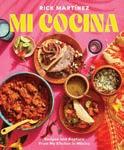 Martínez
Martínez
Within the past few years, I have become passionate about cooking—researching recipes, watching cooking tutorials, and reading Bon Appetit magazine. It is from Bon Appetit that I first learned of Rick Martínez, cook, writer, and recipe developer who has a deep love of Mexican culture and cuisine. (Martínez was a senior food editor at Bon Appetit before he left the Condé Nast company because of their lack of commitment to diversity and inclusion.)
Martínez’s 2022 cookbook, Mi Cocina, is a love letter to Mexico. Martínez is a first-generation Mexican American and he traveled over 2,000 miles through 32 Mexican states and 156 cities to experience a variety of authentic Mexican cuisine. The book is split into eight chapters, including seven that focus on specific regions: El Bajío, Oaxaca, Yucatán, El Golfo, El Norte, Pacífico, and Baja. The recipes are beautifully photographed and assist the reader in visualizing the 104 recipes.
Martínez proves that writing recipes is an art form. He starts each chapter with information about the region, environment, people, and traditions. Mi Cocina isn’t just a cookbook, it’s a story about cultural identity. He provides history and context for his versions of iconic regional recipes that he grew up eating; Martínez is like an art historian examining a painting and appreciating its beauty. His writing is clear and concise. That
said, this cookbook is not for those looking for an easy shortcut to making Mexican cuisine. He wants you to appreciate the ingredients and the techniques for how Mexican food is made, and encourages the reader to take on a challenge. He even gives suggestions for what to serve with each recipe, referencing other recipes in the book to accompany it.
Some of my favorite recipes include frijoles con veneno (slow-roasted pork shanks with chiles anchos over refried beans), esquites (roasted fresh corn with poblano and chile de árbol), and salsa aguacate (avocado salsa).
If you like to cook and want to fall in love with Mexico, I encourage you to get this cookbook. Mi Cocina is available at Masterson Made in Woods Hole, along with tortilla presses and citrus juicers hecho en Mexico. The history and the photos featured in the book are enough to make you want to pack your bags and experience it firsthand.
This Time Tomorrow
 Emma Straub
Emma Straub
Have you ever wanted to know what would happen if you could go back in time and make a different decision? Would it change the trajectory of your life? Emma Straub’s This Time Tomorrow examines just that. Part science fiction, part fantasy, Straub takes a fresh look at the time travel trope. The protagonist, Alice, is an unmarried, New York City private-school admission professional who works at the same school from which she graduated. On the day of her 40th birthday, she wakes up as her 16-year-old self, repeating the day’s events that occurred 24 years earlier. Could the decisions she makes in these 24 hours change the course of her future relationships or her father’s health?
This story is full of charm and 1990s nostalgia. It’s as if the movie 13 Going on 30 met the TV show Russian Doll. Straub has us examining our own life choices, regrets, dreams, and wishes that things might have gone differently. As Alice’s wise boss, the director of admission, states, “Our choices in life matter—but most are not permanent face tattoos.”
Sharon
Kreamer

Science Cells at Work
Akane Shimizu
This summer I decided to read a totally different type of book. Japanese manga novels follow a particular style developed during the 19th century. In recent years, this type of graphic novel has become hugely popular along with anime. I read a biology-themed manga novel, in the hopes that I might be able to recommend it to some of my students as a different way to connect with science beyond the classroom. This story chronicles the adventures of members of the immune system represented as human characters. Once I got used to reading from back to front and from right to left, I was totally delighted by the fast-paced story. The human body is a dangerous and scary place for a red blood cell trying to make deliveries. As she navigates the corridors and streets composed of blood vessels, she meets a
9The Bookworm 2022-23
Liz
white blood cell that fights off invading bacteria. Later, she connects with other members of the immune system who work together to keep the buildings and highways of the body safe from foreign invaders. There is even character development along the way. Interspersed amongst all the action are definitions and facts about the various members of the immune system. This book was fun to read and allowed me to look at the biological processes of the immune system from a new perspective.
Elisabeth Munro Ledwell English Department Chair
Tomorrow, and Tomorrow, and Tomorrow
 Gabrielle Zevin
Gabrielle Zevin
This new novel is nothing like Zevin’s earlier hit, The Storied Life of A.J. Firky. When I first glanced at the description, I was not sure that I could really love a story about video game designers. (Let’s just say that video games and I have never had a real relationship.) But, as I followed the stories of Sadie, Sam, and Marx, three talented and creative game designers, I was enthralled. I might even like to play the games they created.
Lessons in Chemistry
Bonnie Garmus
I heard only a snippet about this story on NPR, and when I picked it up, I thought at first that it was a non-fiction book about female chemists. It’s not. Instead, the story follows Elizabeth Zott, a chemist in the mid-twentieth century who faces love and loss, prejudice and acceptance, friendship and enmity. She reminded me a lot of Jennie Fields from John Irving’s The World According to Garp. Quirky, brilliant, and socially awkward, Elizabeth Zott is driven by one thing, and one thing only—her love of science. The story’s disparate elements eventually all tie together in a neat little package, but I enjoyed just following the characters, Elizabeth and her daughter Mad the most.

Sea of Tranquility
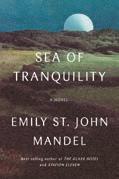 Emily St. John Mandel
Emily St. John Mandel
Several years ago, I fell in love with Station Eleven, a wonderfully structured and complicated novel about a pandemic, a dystopian society, and the endurance of music and theater (because survival just isn’t enough, to paraphrase the performers in the novel). I was less enthusiastic about The Glass Hotel, St. John Mandel’s next book, for I had trouble connecting to the characters in the story. Now, along comes Sea of Tranquility, a novel that seemingly connects all the dots between the three novels. I don’t want to give too much away, but suffice to say that elements of Mandel’s other novels make their way into Sea of Tranquility. Each of the characters are fascinating in their own right, even before the connections become apparent. I’ll keep reading Emily St. John’s books.
Claire of the Sea Light Edwidge Danticat


This lovely, lyrical novel by Haitian-American author Danticat is part mystery and part lyrical exploration of the island and its people. The daughter of a local fisherman goes missing, and her father’s, her neighbors’, and her friends’ stories weave together to tell a beautiful story as they search for her. I liked this book so much that I have picked up several other novels by the same author.
Thunderstruck Erik Larson
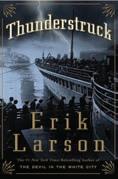
Larson’s nonfiction books have always entertained me. In Thunderstruck, he draws together two seemingly disparate historical events, focusing on the murderer Hawley Crippen (a name that pops up in many stage plays as a symbol of unexpected darkness) and the inventor Guglielmo Marconi. Seemingly unrelated stories of these two men intersect in unexpected ways, making for a fascinating read.
Pauline Levy Valensi Modern Language All Good People Here Ashley Flowers
Twenty-six-year-old Margot, a journalist for an Indianapolis newspaper, returns to her hometown of Wakarusa for the first time in a decade to become caregiver for her uncle Luke, who suffers from Alzheimer’s. But when she arrives, the abduction and murder of a little girl in the neighboring town brings back the memory of her childhood friend January, who was abducted and killed when they were six years old. Could the two crimes be connected? Margot pours all her resources and her energy into finding out what happened that fatal night 20 years ago. Piece by piece, Margot recreates the puzzle of January’s death. Along the way, she uncovers dark secrets just under the surface of this apparently peaceful community. Could even her uncle be involved?
Edward Lott Mathematics
In the Rough: The Business Game of Golf
 David Hueber
David Hueber
As a long-time golfer who grew up during the great expansion of the game, I enjoyed exploring David Hueber’s autobiography. It provided me with an entertaining behind-thescenes look into many of the changes in golf that I witnessed from the late 1970s to the early 2000s. Hueber just happened to be that guy who always seemed to be in the right place at the right time to watch and be involved in some of the big events in golf history. The early part of the book is filled with great
10 The Bookworm 2022-23
stories and honest analysis of some of the key people in golf’s expansion. While he does spend a little too much time on the nitty gritty aspects of the business in the middle of the book, he finishes off with some anecdotes about Ben Hogan and his secrets to golf that all golfers should know.
Scottie Mobley Science and Mathematics
The Te of Piglet
Benjamin Hoff
As I was cleaning out my bookcase this summer to donate to the public library I came across an old friend, The Tao of Pooh. This was a beloved book of mine that I read in 10thgrade English. As I looked through it with nostalgia, I remembered that there was another book by Hoff, The Te of Piglet. After a quick search, I found a copy at the Woods Hole public library and I let my summer reading commence.
This companion book, not sequel, is described as “being needed today” by Piglet because “there was more to say, but no one was saying it.” I wish I could have agreed with Piglet, but much of the book felt like a political rant of the author’s views. I wished Piglet was featured more, like Pooh in The Tao of Pooh. The few stories featuring the characters of the hundred-acre woods portrayed Piglet as an unassuming character, a bit shy and anxious. His small size suits him. In the story, he is the only character to evolve and grow, making his size not a detriment, but rather an attribute that he uses to help his friends. I think we can all learn a lot from Piglet.
 Susan Moffat Arts
Susan Moffat Arts
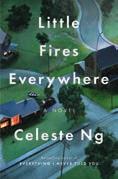
Little Fires Everywhere
Allyson Manchester, The Bookworm Queen, recommended this book. The story takes place in Shaker Heights, a suburb of Cleveland, which is where Celeste Ng grew up. Although it’s billed as fiction, it’s clear that she has a strong sense of real life there. It taps into teenage drama, white entitlement, the mind of an artist, motherhood, a battle for the custody of a Chinese baby, racism, and lots of secrets. The characters are colorful and believable, and the plot is captivating. I’m definitely ready to read more from this author.
Happy-Go-Lucky
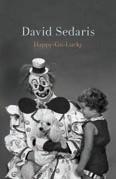
David Sedaris
I must say that listening to this was the perfect companion on a long drive this past summer. David Sedaris is a master of writing about his life of dysfunction in a mostly lighthearted way, although he doesn’t care for that word—dysfunction. This collection of essays is sarcastic, finger-pointing, offensive, and enigmatically hilarious.
Sedaris reveals details that most would be afraid to mention, like his penchant for feeding candy to ants, which he speaks openly about with a store clerk. His incessant banter with Hugh, his forever grumpy life partner, touches on things that make the reader both laugh and cry. Sedaris is prolific in churning out humorous yet thought-provoking pieces and, his most recent, Happy-Go-Lucky, continues the trend.
Lucy Nelson Arts
The Wheel of Time series





Robert Jordan
I first tackled this series in high school when the first eight novels had been written. When the final book was published in 2013, I started from book one and made my way through all 14 novels, nearly 12,000 pages. When lockdown started in March 2020, it felt like a good time to do it all over again! This time I am reading in tandem with my husband so I have someone with whom to discuss the immensely elaborate high-fantasy universe. (We haven’t finished all 14 together yet.) Widely considered the most epic fantasy series ever written, they provide the perfect diversion from the stress of today. Jordan draws upon mythologies from around the world to create the ultimate fantasy tale of good versus evil. The story begins in a small village and follows five young adults who journey into the larger world and are soon entwined in the plots of kings, queens, and magicwielders called Aes Sedai.
The Grishaverse novels: Shadow and Bone, Siege and Storm, Ruin and Rising, Six of Crows, Crooked Kingdom, King of Scars

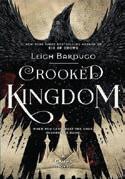 Leigh Bardugo
Leigh Bardugo
I read this YA fantasy series with my daughter this summer and we both loved it! Loosely using 19th-century Russia and 17th-century Amsterdam as the setting, we follow a young mapmaker Alina Starkov during a bitter civil war. Upon discovering her magical abilities, Starkov gets involved in a much larger battle for the soul of her country. The Grishaverse novels follow various characters throughout the fantasy world, with romance, complex heists, and a few gory battles.
11The Bookworm 2022-23
Celeste Ng
Unwinding Anxiety: Train Your Brain to Heal Your Mind
 Judson Brewer
Judson Brewer
Judson Brewer, in Unwinding Anxiety, explores how anxiety can be thought of as a habit, reinforced by reward-based learning. It starts with a trigger, followed by a behavior (that can also be a feeling or thought), which results in a reward. People tend to repeat whatever is rewarding, so a habit loop forms. Brewer outlines several case studies to demonstrate. Often the reward is short term or has negative consequences, but the brain does not easily differentiate between short-term and long-term rewards once propelled into a habit loop. Brewer addresses habit loops for cravings (as in addictions), for rumination (as in depression), but mostly for anxiety. He enthusiastically reassures that there are concrete steps a person can take to get out of the habit loops unique to their experience. The first step is to use curiosity to identify and map out one’s patterns. Perhaps most useful is Brewer’s contention that focusing on the present moment through regular, daily mindfulness practice can unwind those well-worn pathways of the mind.
 Ben Parsons Middle School Coordinator, English Bewilderment Richard Powers
Ben Parsons Middle School Coordinator, English Bewilderment Richard Powers
After being awed by The Overstory last year, I was eager to take up another of Powers’ tales of interwoven ecologies. In this story, a complicated father-son relationship anchors Powers’ forays into science fiction, political and social commentary, and the psychology of grief in something real and close to any parent’s heart. The depths of sadness and wonder that Powers elicits through an astrobiologist father’s relationships with his young son, the ghost of his deceased wife, his colleagues, and the world at large, left me gutted at times, transported at others. While the “road” for all of them might not be as deliberately post-apocalyptic as it is in Cormac McCarthy’s father-son tale, in many respects Bewilderment is a more devastating reflection on failed ecologies. Despite his best intentions to find exoplanets that might support life, or to find viable solutions for his son’s unique needs, the father in this tale is left alone and bereft. In Bewilderment, human and natural ecologies do not regenerate, even with the aid of modern science and good intentions. The final pages offer a glimpse into how it all might end—a “big bang” followed by a slow exhale and sigh of exhaustion.
Helen Reuter Learning Specialist

The Solace of Open Spaces: Essays Gretel Ehrlich
Ehrlich’s collection is poetry, natural history, and psychology intertwined seamlessly with her personal story of loss and discovery. A New York filmmaker, Ehrlich unexpectedly settles in Wyoming after the death of her life and filmmaking partner, attempting to lose herself and her grief. Instead, exposed by the rawness of the landscape and challenges of living there, she unearths—almost literally—insights about herself and about life. We are not only fortunate that she stayed, but also that her filmmaker’s eye for detail and ear for stories translate so well to the written word. Her prose is melodic: Wyoming seems to be the doing of a mad architect—tumbled and twisted, ribboned with faded, deathbed colors, thrust up and pulled down as if the place had been startled out of a deep sleep and thrown into a pure light.
Even more impressive than Ehrlich’s resplendent descriptions of Wyoming’s geography and natural history is what she reveals about the cowboys, ranchers, hired hands, shearers, and assortment of townspeople living in this vast wilderness. We learn—as Ehrlich did with an openness of heart and mind that seems to have come from her own loss—how to interpret the sparse language and pragmatic actions of this typically reserved group, and come away with an understanding and respect for a people a world away in cares and needs. Ehrlich’s latest collection, Unsolaced, published last year, promises to be just as vividly expressive and eloquent as she expands her field of vision to other places initially foreign to her, and to a shared loss—the loss of open spaces resulting from climate change. If you love nature writing or poetry, I highly recommend exploring or revisiting Ehrlich’s work.
Jill Reves Science Miracle Country Kendra Atleework
I had the pleasure of meeting Kendra Atleework in Long Beach, CA, at a women’s author conference. She was young, yet her writing in her first book is dreamy and lovely. As a recipient of water from “up North” while growing up in Southern California, and as a student and engineer in Northern California, as well as a lover of the Sierra Nevada, I noticed that the difference between my two regional habitats was stark. As a child, I heard that William Mulholland was a genius for turning the southern desert into an oasis after the California Aqueduct was completed in 1913. What I didn’t hear about was the devastating effects it had on northern California towns like Bishop—on businesses, farms, and indigenous people. I have always thought that the wars of the future will be waged over

12 The Bookworm 2022-23
Jennifer Park Modern Language
clean water. I didn’t realize it started over a hundred years ago in my home state. I read this as if I were reading the backdrop of my own history living in California, without judgment, as the story of one Bishop woman’s life.
Olivia Riddiford Admission
The Dalai Lama’s Cat
 David Michie
David Michie
In this quick easy read, we meet our narrator just as she is about to be disposed of by some children. Luckily, she is rescued by none other than the Dalai Lama. Told through the eyes of the Dalai Lama’s cat (or the HHC as she calls herself), we are taught the core lessons of what it means to be a Bodhisattva—or as she is striving to be—a Bodhicattva (an enlightened cat). The HHC goes on various adventures, meets dignitaries and Hollywood celebrities, meditates with HHDL, and shares the lessons she learns along the way. Each chapter focuses on a human transgression and how to overcome it through Buddhist teachings from the cat’s point of view. This is a fun, light-hearted read for anyone looking to better themselves with Buddhist teachings taught by a cat. This book is not just for crazy cat ladies or followers of Buddhism (both of which I proudly am), but for all people looking for a little enlightenment.
Britta Santamauro
Director
of Library Services

Tomorrow, and Tomorrow, and Tomorrow
Gabrielle Zevin
I am far from being a video game enthusiast, so I thought that this book was not going to be one that I would particularly enjoy since the two main characters are video game developers. Fifty pages in, I found myself choking back the tears while being swept away by a story of deep, unconditional friendship. The story follows the two main characters, Sam and Sadie, from their childhood encounter in a hospital into their adult life as successful and famous video game producers. In between, life happens with all its messiness of miscommunications, loss, confusion, ambitions, and dreams. As a reader, you form a deep connection to both characters. Once you turn the last page, you’ll walk away feeling you’ve gained a lifetime of insight and wisdom.
Diane Wilson
Meet Rosalie, a Dakota girl who is forced to grow up away from her tribal traditions in a white-dominated community. The story explores how to find happiness in unlikely places, stay true to one’s own beliefs, and fight injustices. Wilson, of Native American descent herself, manages to convey the pain and suffering without needing to describe extreme horrific
situations in detail. The book’s strength is its quiet power—a story that may leave you upset, but also hopeful that human resilience will prevail.
An Immense World: How Animal Senses Reveal the Hidden Realms Around Us Ed Yong
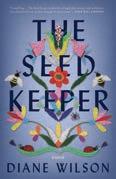
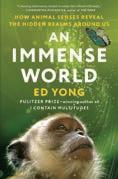
How many senses do humans have? Five you say? Touch, hearing, sight, smell, and taste? Gotcha! This misconception about the human senses has prevailed over the years, but in fact, humans have seven, possibly eight, senses. The lesser known human senses are the sense of balance and the sense of your own body (the fact that you can touch your nose with your eyes closed), as well as the sense of echolocation, which blind people learn to develop. Additionally, a few people live with synesthesia, which allows them to see sounds as colors or associate sights with smells. However, An Immense World shows how our human senses pale in comparison to some of the incredible senses in the animal world. While reading this book, be prepared to have all your conversations with your friends and family start with “Did you know?” followed by a short lecture about a new fact that you just read about. I know that I could not stop talking about the content of this book all summer long, with fascinating facts such as: elephants sense severe weather from miles away and communicate with infrasonic calls; dolphins see through our human bodies using echolocation; and fish produce their own electric fields, as well as sense minute electric signals, to name just a few.
This book takes you on a deep dive into the world of sensory biology. I guarantee that while reading this book, you will amass great conversation starters and never look at the world the same way again.
George Scharr Arts Department Chair
Pacific Vortex!
Clive Cussler

A good read this summer, while I cruised the warm waters of Bermuda, was Clive Cussler’s first Dirk Pitt novel, Pacific Vortex! Having read many of Cussler’s novels, I was fascinated to have a look at the first featuring Pitt as the protagonist.
Pitt is a swashbuckling character, who is smooth, confident, and even humorous in the most adverse situations. He and his sidekick, Al Giordano, have a long friendship and a history of getting in and out of the tightest of squeezes.
The big reason that this book appeals to me is Cussler’s knowledge of the sea and shipwrecks. Most of his yarns begin around a shipwreck, often an ancient one.
In this case, Pitt dives into an area of the sea that has claimed many ships in mysterious ways (think Bermuda triangle, but different). This vortex has recently claimed one of the Navy’s most advanced ships, a nuclear submarine, the Starbuck. The National Marine Underwater Association (NUMA) tasks Dirk with finding out how she sank.
13The Bookworm 2022-23
The Seedkeeper
Mystery, intrigue, murder, and romance are all part of this maritime novel. Good clean fun for me while sitting on a ship’s balcony scanning the Bermuda shoreline.
Ruth Slocum Director of College Counseling
Mrs. Palfrey at the Claremont
Elizabeth Taylor
I had never heard of this particular Elizabeth Taylor at the time I picked up this book, but she was once well-known in England, and Mrs. Palfrey at the Claremont was nominated for the Booker Prize in 1971.
The novel is set in the 1950s in London at a hotel for older people who are between independent living and the nursing home. Mrs. Palfrey has chosen a hotel in London because her only grandchild, Desmond, works nearby at the British Archives, and she assumes that he will visit her regularly.

Desmond, it turns out, is a loser of a grandson and, despite many invitations, never turns up. Mrs. Palfrey isn’t particularly hurt by this, except she has bragged about Desmond to the other residents, so his absence is frequently commented upon.
One day, Mrs. Palfrey is out for a walk when she falls quite badly on the sidewalk in front of the basement apartment of the very charming and very poor Ludo, a struggling writer. Ludo comes to her rescue and, to thank him, she invites him to dinner at the Claremont, which he is very glad to accept as he rarely eats a good meal. Mrs. Palfrey has the idea that she might introduce Ludo as Desmond, and Ludo is happy to go along with this subterfuge. Things take off from there.
This novel is about later life, but it is also about families. Taylor reminds us that some are held together by a web of duties instead of by love and that real affection can spring up at any point in life. Throughout the novel, Mrs. Palfrey writes regular letters to her daughter in Scotland, signing “Your loving mother,” but there seems to be no real love or understanding between the two. And Desmond cannot be bothered to go slightly out of his way to visit his grandmother. Into the void steps Ludo, our hero, whose own mother is not very interested in him or his writing, but who finds in Mrs. Palfrey a true friend and muse.
Elizabeth Taylor wrote 13 books, and this was her penultimate one; I am happy to have more to look forward to reading. I should add that there is also a film starring Joan Plowright as Mrs. Palfrey.
Rob Wells History Department Chair
Looking for the Good War: American Amnesia and the Violent Pursuit of Happiness

Elizabeth D. Samet
We live in a time of intense debate about our national historical narrative. Much attention has been focused recently on the Civil War and its lasting myths and conflicting interpretations. Less attention has been focused on examining the myths surrounding World War II that still dramatically shape America’s sense of itself and
of the world. Samet, a professor of English at West Point, was an influential teacher of my former colleague, Colin O’Brien. He referred to Samet a number of times in conversations, so I had an extra interest in reading her widely-discussed recent book. She explores, explains, and debunks much of the romanticism that Americans have attached to the so-called “Good War” in which all Americans supposedly rallied together to selflessly defeat the evils of fascism. Samet employs a wide lens that draws heavily on film and literature from the 1930s, ’40s, and ’50s to offer a more nuanced understanding of the impact of World War II on American attitudes and outlooks, as well as the mindsets of the generation that fought the war. Her comparisons of the romanticizing of the 20th century’s great conflict with the romanticizing of the Civil War in the decades prior offer the reader insight into American history beyond just World War II. For example, I was intrigued to learn how deeply attached 19th-century Americans were to Shakespeare. Samet is a deft writer and an incredible researcher. This is a thoughtful and intellectually stimulating work.

Confederates in the Attic: Dispatches from the Unfinished Civil War
Tony Horwitz
Building on the themes of historical myths and writers with connections to Falmouth Academy, I thoroughly enjoyed traveling about the South with the late Tony Horwitz, a former FA parent, in his book from 1998. Building on a boyhood fascination inherited from his immigrant grandfather and shared with his father, Horwitz crisscrosses the former Confederacy seeking out historical sites, visiting battlefields, and talking with a wide variety of local folks about their views of the Civil War. He talks with museum directors, high school teachers, park rangers, tour guides, and countless random people he encounters in diners or shops. Repeatedly such encounters lead to a suggestion of another site he should visit or a particular person with whom he should speak, and so he does. Especially entertaining is his recounting of experiences with units of Civil War reenactors; one long week spent with a hardcore reenactor on a pilgrimage in search of “authentic” experiences of Civil War-related sites stands out. There is real history to be learned here, and I found the book interesting for that reason alone. More importantly, though, is the window that is opened into the conflicting views of history and truth in America. Reviewers of the book described it as at times “hilariously funny” and “by turns amusing, chilling, poignant….” There are surely funny moments, but I was acutely aware as I read that I was viewing a time capsule of sorts from the 1990s. If I had read the book then, I would have been less appallingly surprised at the divisions in our country that have become all too clear now, and knowing what has more recently transpired, chilling may have been the wisest word choice from those 25-year-old reviews. Horwitz was a terrific writer whose enthusiasm and intellect leap off the pages. A better travel companion would be hard to find. I am grateful for the shared journey.
14 The Bookworm 2022-23
A Gift from Your Fellow Readers at Falmouth Academy

At Falmouth Academy, we believe that reading is a lifelong activity and that healthy reading habits start young. Each prospective student who interviews at Falmouth Academy is invited to select a book from the Admission Office bookshelf as our gift to them. To build our Admission library, we talk with the school librarian and current students to find out what interests them and what new books might excite student applicants. Below is a list of this year’s book selections.
The False Prince

Jennifer A. Nielsen
Fantasy, Adventure
Ground Zero

Alan Gratz

Historical Fiction
The 57 Bus Dashka Slater
True Crime, Nonfiction, LGBTQ+
The Poet X Elizabeth Acevedo

Poetry, Contemporary

Jennifer Chan is Not Alone Tae Keller

Realistic Fiction, Mystery


Dear Student Elly Swartz
Realistic Fiction
They Both Die at the End Adam Silvera Fiction, Sci-Fiction, LGBTQ+

The Last Mapmaker
Christina Soontornvat Fantasy, Adventure Wave Riders Lauren St John Mystery, Adventure
The Hidden Oracle (Trials of Apollo, Book One) Rick Riordan Fantasy, Adventure, Mythology


City Spies James Ponti Fiction, Mystery, Adventure

When Stars are Scattered Victoria Jamieson & Omar Mohamed Graphic Novel, Memoir
Reading is to the mind as exercise is to the body. —Joseph Addison
Below are members of FA's Admission Team (l-r): Assistant Director Kyle Flannery, Director Sarah Knowles, and Assistant Olivia Riddiford.
Falmouth Academy

ADDRESS SERVICE REQUESTED Non-Profit Org. U.S. Postage PAID Brockton, MA Permit # 601
on recycled paper, containing 10% post-consumer waste, that was harvested from responsibly managed forests. Printed with Soy based inks.
7 Highfield Drive Falmouth, MA 02540
Printed








































































 Britta Santamauro Director of Library and Media Services
Britta Santamauro Director of Library and Media Services












 Paraic O’Donnell
Paraic O’Donnell








 Matt Green Head of School Great Circle Maggie Shipstead
Matt Green Head of School Great Circle Maggie Shipstead
 Jean Hanff Korelitz
Jean Hanff Korelitz


 Celeste Ng
Celeste Ng
 Sarah Strong and Gigi Butterfield
Sarah Strong and Gigi Butterfield



 Martínez
Martínez
 Emma Straub
Emma Straub

 Gabrielle Zevin
Gabrielle Zevin
 Emily St. John Mandel
Emily St. John Mandel



 David Hueber
David Hueber
 Susan Moffat Arts
Susan Moffat Arts








 Leigh Bardugo
Leigh Bardugo
 Judson Brewer
Judson Brewer
 Ben Parsons Middle School Coordinator, English Bewilderment Richard Powers
Ben Parsons Middle School Coordinator, English Bewilderment Richard Powers


 David Michie
David Michie



















